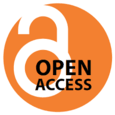Association Analysis of LCORL Genetic Variant (rs657074013) with Wither-Height in Pakistani Goats
Association of LCORL Variant (rs657074013) with Goat Height
DOI:
https://doi.org/10.54393/fbt.v3i02.46Keywords:
Capra hircus, Body-Size, LCORL, Genetic Marker, Skeletal FrameAbstract
The goat stands as one of the most valued and economically efficient domestic animals, contributing significantly to human welfare through the provision of meat, milk, fiber, skin, and manure. Notably, the initial two production traits are contingent upon the physical attributes of the animals, exemplified by characteristics such as large body size and skeletal frame. Earlier (GWA) studies, employing high-density arrays, have revealed a noteworthy association of various variants located at the boundaries of NACPG and LCORL genes across diverse livestock species. Objective: To investigate the genetic variability/association of rs657074013A>AT variant of LCORL gene within diverse goats from Pakistan. Methods: ARMS-PCR genotyping technique was used where, a total of 51 goats belongs to diverse breeds were screened with allele-specific set of primers. Results: Current study showed that 27% sampled population is homozygous wild-type (A/A), 24% is homozygous-mutant (AT/AT) and 49% is heterozygous (A/AT) with a significant genetic association X2 p- value = 9.60 x 10-5 using PLINK. Hardy-Weinberg Equilibrium revealed that overall sampled population obeys the principle with X2 (2, N=51) = 0.046, p = 0.9730. Furthermore, alternative allele frequencies (AAF) of 0.68 and 0.28 were also observed within cases and control cohorts respectively along with an odds-ratio of 5.242 which depicts the AAF is ~5 times higher in cases vs controls. Conclusions: In summary, this pilot-scale study has advanced our genomic understanding by examining the variability and association of this LCORL variant (c.828_829insA) within the Pakistani goat population. The insights gained hold promise for enhancing this economically crucial trait through the implementation of marker-assisted breeding strategies in this particular species and warrant further exploration in other livestock species to broaden our understanding and potential applications
References
Ahmad HI, Ahmad MJ, Jabbir F, Ahmar S, Ahmad N, Elokil AA, et al. The domestication makeup: Evolution, survival, and challenges. Frontiers in Ecology and Evolution. 2020 May; 8: 103. doi: 10.3389/fevo.2020.00103.
Zheng Z, Wang X, Li M, Li Y, Yang Z, Wang X, et al. The origin of domestication genes in goats. Science Advances. 2020 May; 6(21): eaaz5216. doi: 10.1126/sciadv.aaz5216.
Colli L, Lancioni H, Cardinali I, Olivieri A, Capodiferro MR, Pellecchia M, et al. Whole mitochondrial genomes unveil the impact of domestication on goat matrilineal variability. BMC Genomics. 2015 Dec; 16(1): 1-2. doi: 10.1186/s12864-015-2342-2.
Pereira F and Amorim A. Origin and spread of goat pastoralism. EncyclopediaofLifeSciences(ELS). 2010 Sep: 1-10. doi: 10.1002/9780470015902.a0022864.
Iqbal A, Khan BB, Tariq M, Mirza MA. Goat-A potential dairy animal: Present and future prospects. Pakistan Journal of Agricultural Sciences. 2008 Jan; 45(2): 227-30.
Zhang S, Jiang E, Wang K, Zhang Y, Yan H, Qu L, et al. Two insertion/deletion variants within SPAG17 gene are associated with goat body measurement traits. Animals. 2019 Jun; 9(6): 379. doi: 10.3390/ani9060379.
Zhong JL, Xu JW, Wang J, Wen YF, Niu H, Zheng L, et al. A novel SNP of PLAG1 gene and its association with growth traits in Chinese cattle. Gene. 2019 Mar; 689: 166-71. doi: 10.1016/j.gene.2018.12.018.
Saif R, Henkel J, Jagannathan V, Drögemüller C, Flury C, Leeb T. The LCORL locus is under selection in large-sized Pakistani goat breeds. Genes. 2020 Feb; 11(2): 168. doi: 10.3390/genes11020168.
Han YJ, Chen Y, Liu Y, Liu XL. Sequence variants of the LCORL gene and its association with growth and carcass traits in Qinchuan cattle in China. Journal of Genetics. 2017 Mar; 96: 9-17. doi: 10.1007/s12041-016-0732-0.
Graber JK, Signer‐Hasler H, Burren A, Drögemüller C. Evaluation of truncating variants in the LCORL gene in relation to body size of goats from Switzerland. Animal Genetics. 2022 Apr; 53(2): 237. doi: 10.1111/age.13177.
Liu Y, Li H, Wang M, Zhang X, Yang L, Zhao C, et al. Genetic architectures and selection signatures of body height in Chinese indigenous donkeys revealed by next‐generation sequencing. Animal Genetics. 2022 Aug; 53(4): 487-97. doi: 10.1111/age.13211.
Posbergh CJ and Huson HJ. All sheeps and sizes: a genetic investigation of mature body size across sheep breeds reveals a polygenic nature. Animal Genetics. 2021 Feb; 52(1): 99-107. doi: 10.1111/age.13016.
Staiger EA, Al Abri MA, Pflug KM, Kalla SE, Ainsworth DM, Miller D, et al. Skeletal variation in Tennessee Walking Horses maps to the LCORL/NCAPG gene region. Physiological Genomics. 2016 May; 48(5): 325-35. doi: 10.1152/physiolgenomics.00100.2015.
Plassais J, Kim J, Davis BW, Karyadi DM, Hogan AN, Harris AC, et al. Whole genome sequencing of canids reveals genomic regions under selection and variants influencing morphology. Nature Communications. 2019 Apr; 10(1): 1489. doi: 10.1038/s41467-019-09373-w.
Rubin CJ, Megens HJ, Barrio AM, Maqbool K, Sayyab S, Schwochow D, et al. Strong signatures of selection in the domestic pig genome. Proceedings of the National Academy of Sciences. 2012 Nov; 109(48): 19529-36. doi: 10.1073/pnas.1217149109.
Takasuga A. PLAG1 and NCAPG‐LCORL in livestock. Animal Science Journal. 2016 Feb; 87(2): 159-67. doi: 10.1111/asj.12417.
McEvoy BP and Visscher PM. Genetics of human height. Economics & Human Biology. 2009 Dec; 7(3): 294-306. doi: 10.1016/j.ehb.2009.09.005.
La Y, Zhang X, Li F, Zhang D, Li C, Mo F, et al. Molecular characterization and expression of SPP1, LAP3 and LCORL and their association with growth traits in sheep. Genes. 2019 Aug; 10(8): 616. doi: 10.3390/genes10080616.
Tetens J, Widmann P, Kühn C, Thaller G. A genome‐wide association study indicates LCORL/NCAPG as a candidate locus for withers height in G erman W armblood horses. Animal Genetics. 2013 Aug; 44(4): 467-71. doi: 10.1111/age.12031.
Mostafavi A, Fozi MA, Koshkooieh AE, Mohammadabadi M, Babenko OI, Klopenko NI. Effect of LCORL gene polymorphism on body size traits in horse populations. Acta Scientiarum. Animal Sciences. 2019 Oct; 42: e47483. doi: 10.4025/actascianimsci.v42i1.47483.
Downloads
Published
How to Cite
Issue
Section
License
Copyright (c) 2023 Futuristic Biotechnology

This work is licensed under a Creative Commons Attribution 4.0 International License.
This is an open-access journal and all the published articles / items are distributed under the terms of the Creative Commons Attribution License, which permits unrestricted use, distribution, and reproduction in any medium, provided the original author and source are credited. For comments editor@fbtjournal.com











